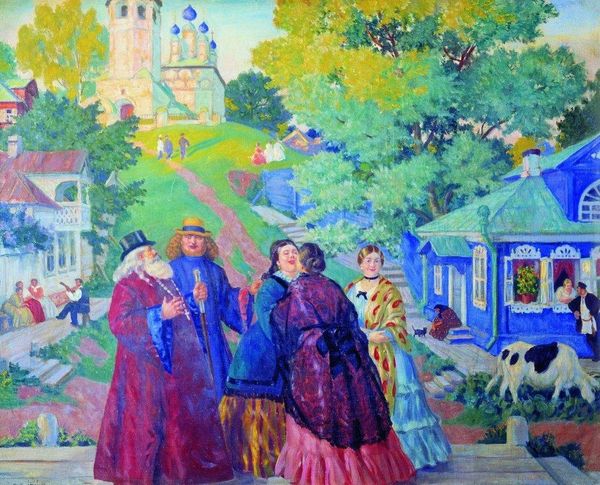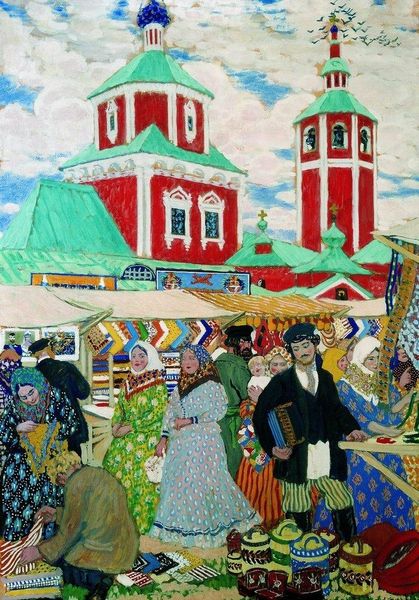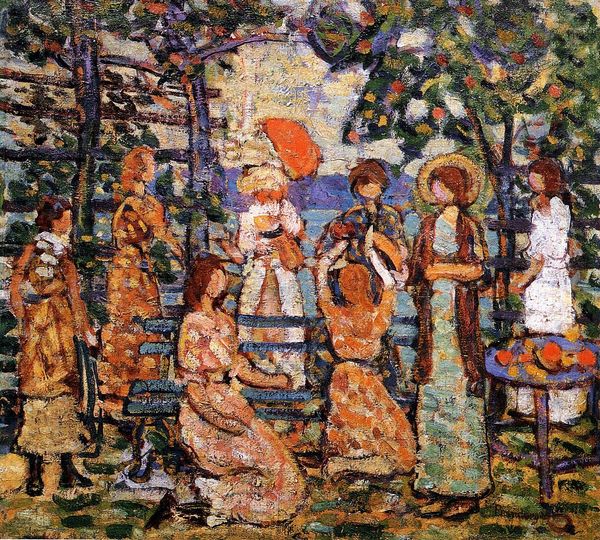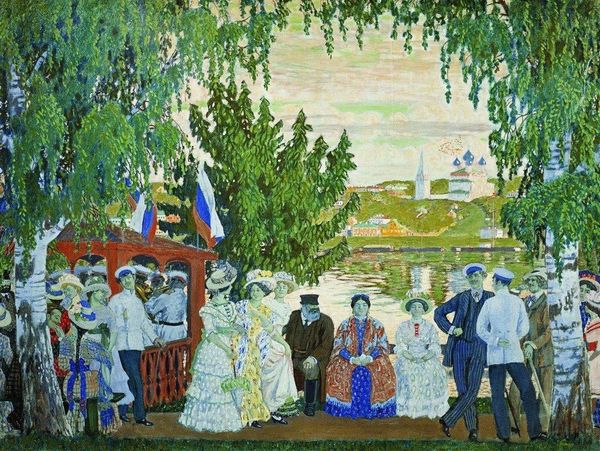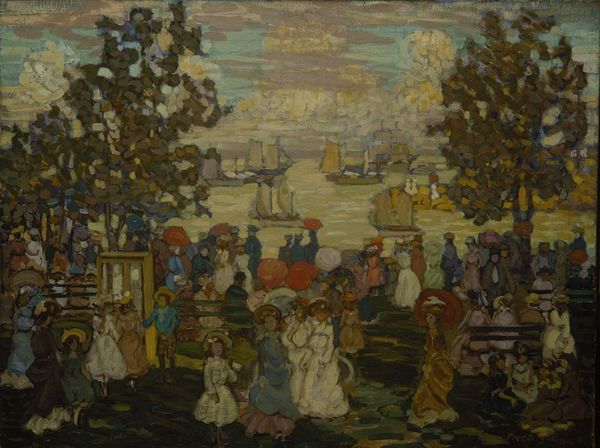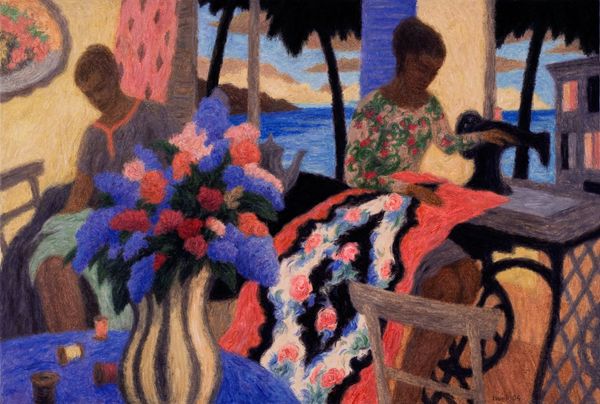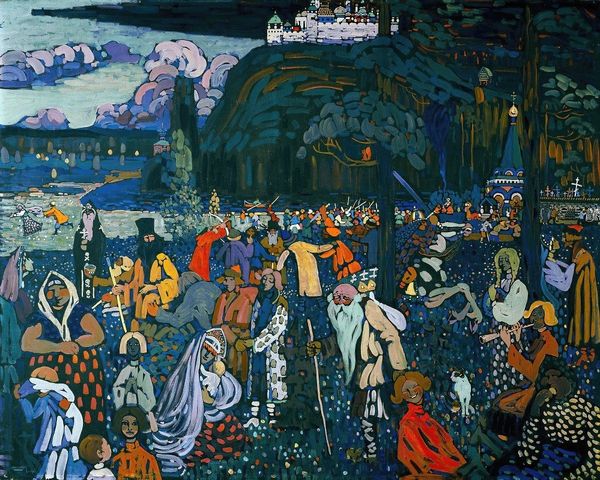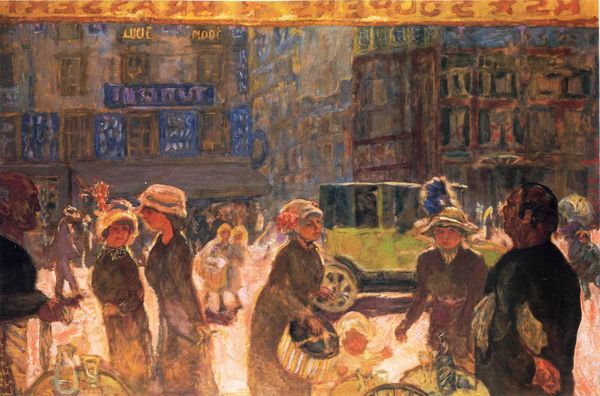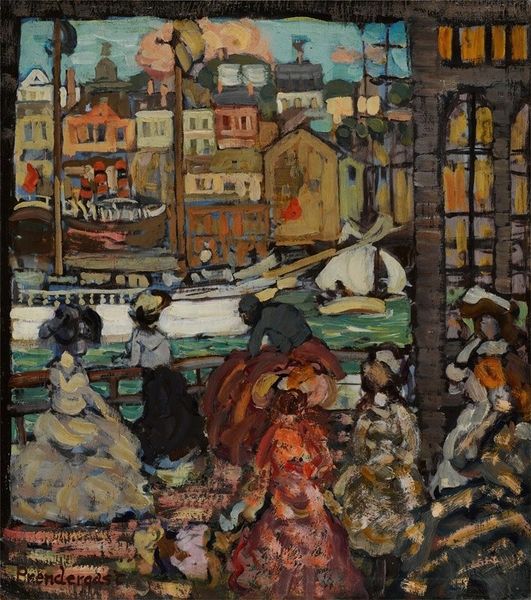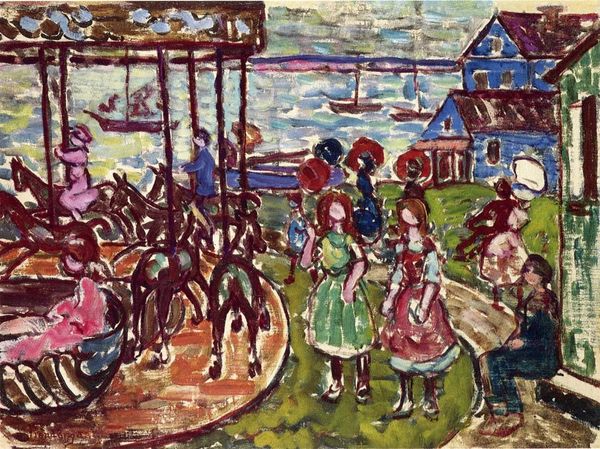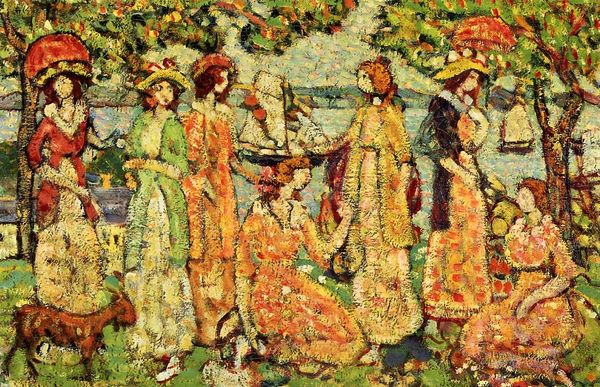
oil-paint
#
portrait
#
oil-paint
#
oil painting
#
group-portraits
#
naive art
#
russian-avant-garde
#
cityscape
#
painting art
#
genre-painting
Copyright: Public domain
Curator: Boris Kustodiev's 1912 painting "Merchant Wives" is currently held at the Museum of Russian Art in Kyiv. The work offers a window into early 20th-century Russia. Editor: My immediate impression is of abundance. From the figures themselves, full-bodied and richly adorned, to the bustling cityscape peeking out from behind them, everything feels ample and brimming with life. Curator: Absolutely. It's interesting how Kustodiev employs the motif of the 'woman as symbol' here. He presents them almost as embodiments of prosperity and cultural stability, despite the shifting political landscape of the time. Their attire, deeply rooted in tradition, reflects a continuity of cultural values. Editor: While that may be true, I see more complexity here. These women, positioned in the public sphere—the marketplace— are engaging in economic activity. Are they merely symbols of prosperity or are they active participants in it? I see agency in their gathering; perhaps their roles weren't as limited as they seem. Curator: That’s an interesting point. And, thinking about the marketplace, isn't it fascinating how the architectural elements, with the church tower juxtaposed against the shop fronts, are placed so prominently? Kustodiev seems intent on embedding these women within a precise symbolic geography that speaks volumes about Russian society. There is a conversation happening here about traditional versus emerging ideals, even naive ones, just before Russia entered a period of rapid upheaval. Editor: The colors! So bold! Do the vibrant blues, yellows, and reds of their garments intentionally offset the more muted background? Is it a kind of visual declaration of self, or a representation of status? What could that colorful shawl say about ethnicity, tradition, or origin? Curator: The shawls could absolutely have coded significance. And to think about that declaration, if we explore what the group dynamics say, are we looking at a kind of unspoken hierarchy between women, or just a representation of social exchange? Editor: Reflecting on it now, the painting almost feels like a stage set. Everything is carefully arranged to convey a specific atmosphere, prompting reflection. Curator: Yes, this piece truly acts as an interesting record. A tableau, perhaps deliberately staged, to present Russia and the changing roles of its women at the cusp of an era.
Comments
No comments
Be the first to comment and join the conversation on the ultimate creative platform.
